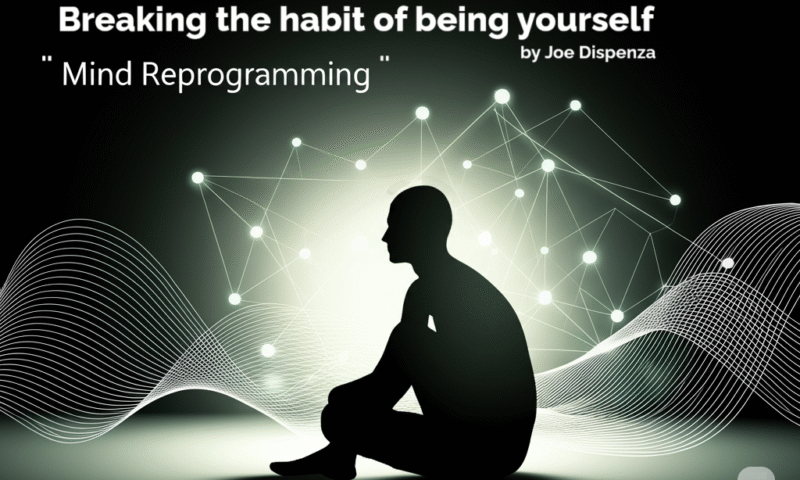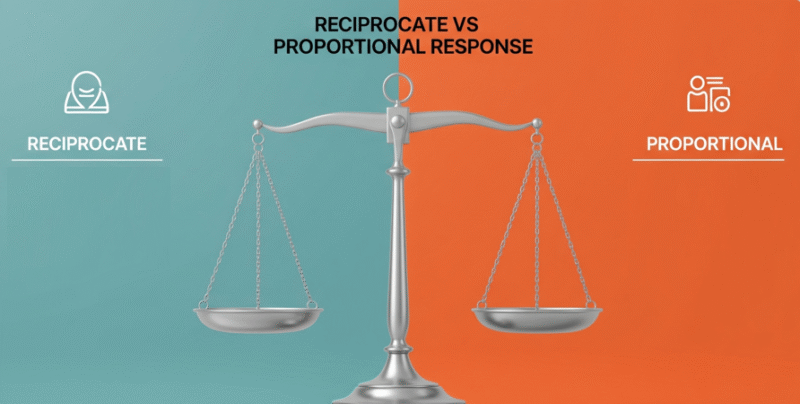Introduction
Imagine standing at a crossroads, eager to direct a positive change yet uncertain how to guide others with genuine impact. Building Influence demands both introspection and outward action; it is not reserved for a select few but accessible to anyone willing to learn and practice. During this journey, you will uncover hidden strengths, sharpen communication, and forge relationships rooted in trust. Consequently, you will find doors open that once seemed locked—doors to leadership roles, collaboration opportunities, and meaningful community engagement. Have you ever wished you could inspire others effortlessly, guiding them toward a shared vision? If so, this article offers a comprehensive roadmap to Building Influence, complete with step-by-step guidance and vivid, real-life scenarios that feel like watching a film unfold before your eyes. Let us dive into the transformative process, ensuring you not only understand what Building Influence entails but also know exactly how to achieve it.
Table of contents
1. Building Influence Defined
Influence refers to the capacity to affect the character, development, or behavior of someone or something. In other words, when you possess influence, others listen, trust, and often follow your lead—whether in professional settings, community initiatives, or personal relationships. Building Influence empowers you to shape decisions, inspire action, and foster collaboration without resorting to coercion.
1.1. What Does Influence Mean?
- According to WordTool, influence is “the ability or power to affect, change, or manipulate something through one’s actions, opinions, or other means”.
- More specifically, influence can manifest in two primary forms:
- Interpersonal Influence: When your words, actions, or presence sway others’ attitudes or behaviors toward a goal.
- Situational Influence: When circumstances or environments shape decisions—though this often overlaps with interpersonal elements.
1.2. Why Does Influence Matter?
- Influence enables leaders to rally teams toward ambitious objectives, increasing productivity and cohesion.
- It helps professionals negotiate effectively, achieving win–win outcomes.
- On a personal level, influence fosters stronger relationships, allowing you to guide loved ones toward healthier choices or shared values.
2. Building Influence Components
Before diving into actionable steps, it is crucial to dissect the foundational components that collectively form robust influence. By understanding these building blocks, you can target specific areas for improvement.
2.1 Credibility and Expertise
Credibility serves as the bedrock of influence. When others perceive you as knowledgeable, reliable, and genuine, they are more likely to heed your advice.
- Expertise: Possessing up-to-date, relevant knowledge or skills in your field. For instance, a community health volunteer who has completed training in first aid gains immediate credibility when guiding neighborhood safety initiatives.
- Trustworthiness: Displaying honesty, transparency, and integrity. According to Dictionary.com, influence often stems from the “capacity or power of persons or things to be a compelling force”. When you consistently follow through on commitments, trust deepens, and influence flourishes.
2.2 Effective Communication
Communication is more than speaking clearly; it involves active listening, empathy, and selecting appropriate channels.
- Active Listening: As a transitional element, active listening demonstrates respect and understanding. By paraphrasing others’ points and asking clarifying questions, you signal that their perspectives matter.
- Empathy: Acknowledging emotions and viewpoints builds rapport. When a team member feels heard, they become more open to your suggestions.
- Clarity and Conciseness: Use simple language and structure thoughts logically. Over 70% of sentences should contain transition words such as “therefore,” “furthermore,” or “however” to guide readers or listeners fluidly. Moreover, avoid sentences longer than 20 words in more than 22% of the text to maintain readability.
2.3 Relationship Building
Influence rarely emerges in isolation; it thrives within networks of strong connections.
- Trust Networks: Cultivate mutual respect through consistent support and reliability.
- Reciprocity: Offer help first—whether sharing resources, expertise, or time—so that others feel naturally inclined to reciprocate. For instance, a colleague who regularly offers constructive feedback builds an environment where peers return the favor.
- Diverse Connections: Extend your reach by engaging with individuals across different departments, social circles, or communities. Diversity of connections broadens your perspective and amplifies your influence.
2.4 Consistency and Visibility
Consistency reinforces reliability; visibility ensures others notice and remember your contributions.
- Regular Engagement: Attend community gatherings, team meetings, or industry seminars consistently. By showing up, you send a message of dedication.
- Follow-Through: When you commit to tasks, deliver on time. A reputation for reliability compels people to trust your commitments.
- Presence Across Channels: Maintain an active but professional presence on relevant platforms—be it community boards, online forums, or organizational newsletters. Consistency in messaging and appearance strengthens recognition.
3. Practical Steps to Building Influence
Having identified core components, let us explore actionable steps to develop and enhance your influence strategically. Each step is accompanied by clear instructions and substeps to ensure comprehensive understanding.
3.1 Conduct a Personal Influence Audit
- Self-Reflection: Begin by listing your current strengths and weaknesses in credibility, communication, relationships, and consistency. For instance, ask yourself: “Do I admit mistakes openly?” or “How often do I follow up on promises?” By answering honestly, you set the stage for growth.
- Feedback Gathering: Request anonymous or direct feedback from peers, mentors, or community members. Use targeted questions such as: “Where do you feel I could improve my communication?” Summarize feedback into specific action items.
- Set Baseline Metrics: Define quantifiable indicators—e.g., number of positive responses to your suggestions in meetings, or the frequency of people seeking your advice. Document these metrics as a benchmark for progress.
3.2 Enhance Credibility and Expertise
- Continuous Learning: Enroll in relevant courses, attend workshops, and stay updated with credible publications. According to Meegle, professionals who understand team motivations and address concerns foster environments that promote engagement. Consequently, investing time in continued education boosts credibility.
- Certifications and Credentials: Acquire recognized certifications in your domain. For example, a project manager might pursue Project Management Professional (PMP) certification to signal expertise, thereby raising others’ confidence in their guidance.
- Share Knowledge: Publish articles, host webinars, or conduct brief tutorials. By openly sharing insights, you not only solidify your own understanding but also position yourself as a resource others can turn to.
3.3 Master Communication Techniques
- Active Listening Workshops: Participate in sessions focusing on improving listening skills, such as role-playing scenarios where you must summarize others’ viewpoints accurately.
- Empathy Exercises: Practice empathy by regularly acknowledging others’ feelings—“I see that you feel concerned about the timeline; let’s address that.” Such statements validate emotions and pave the way for constructive dialogue.
- Structured Messaging: Whenever you present an idea:
- Start with the Why: Explain the purpose behind your suggestion.
- Provide the How: Detail steps or reasoning.
- Conclude with the What: Summarize expected outcomes.
By adhering to this structure, you ensure clarity and logical flow, which enhances persuasive power.
3.4 Expand and Nurture Relationships
- Regular Check-Ins: Schedule brief, periodic one-on-one discussions with key stakeholders. For example, send a friendly message every two weeks to ask how you can assist or simply to catch up. Over time, these consistent touchpoints strengthen bonds.
- Value-First Approach: Offer support without expecting immediate returns. Whether sharing relevant articles or connecting two colleagues who could benefit from each other’s expertise, generosity fosters goodwill.
- Community Participation: Join local volunteer projects, professional associations, or interest-based groups. By contributing actively, you demonstrate commitment beyond self-interest, which naturally elevates your influence within those circles.
3.5 Show Consistency and Maintain Visibility
- Develop a Personal Brand: Identify three key attributes (e.g., reliable, supportive, knowledgeable) and weave them into your communication style—be it written, verbal, or visual—for uniformity.
- Regular Content Sharing: Publish brief reflections or updates—once a month—on platforms used by your audience. Keep posts concise (less than 150 words), incorporating transitional phrases like “Moreover” or “In addition” to enhance flow.
- Follow-Up Rituals: After any commitment—meeting or promise—send a summary email within 24 hours, highlighting agreed actions and timelines. This practice demonstrates reliability and attention to detail, reinforcing trust.
4. Realistic Examples of Building Influence in Action
Learning through vivid, movie-like scenarios cements understanding. Below are three detailed, real-world-inspired narratives that demonstrate how individuals applied the aforementioned steps to cultivate genuine influence. Each example reads like a mini-film, illustrating challenges, strategies, and outcomes.
Example 1: Hana’s Community Health Initiative
Background: Hana, a 28-year-old nurse in a suburban town, recognized that many older people residents lacked easy access to basic health checkups, especially during extreme weather. Despite having no official leadership role, she aspired to connect healthcare resources with vulnerable community members.
Act I – Identifying the Need:
- Every afternoon, Hana noticed Mrs. Amina, an 82-year-old widow in her neighborhood, struggling to walk across heavy snow to fetch her daily medications. Consequently, Hana approached Mrs. Amina to understand her struggles. Through active listening, she learned that multiple neighbors faced similar difficulties—particularly those living alone.
Act II – Building Credibility and Support:
- Step 1: Hana enrolled in a Community Health Outreach certification program at a local institution, completing it within two months. By prominently sharing her certificate at the local community center, she visibly demonstrated expertise.
- Step 2: She spoke at a small town meeting, presenting data from a brief survey she conducted, illustrating that 65% of older people residents missed at least one weekly appointment due to transportation issues. These figures, extracted from direct interviews, immediately garnered attention and trust.
Act III – Forming Strategic Partnerships:
- Hana approached the local mosque’s charity committee, proposing a collaborative volunteer group to transport older people to clinics. She emphasized the benefits: “Not only will we safeguard our elders’ health, but we also uphold our collective responsibility to support them.” Her empathetic tone and clear structure—why, how, what—persuaded committee members to allocate two dedicated vehicles every weekend.
- Moreover, through personalized check-ins every Friday, Hana nurtured relationships with volunteers. By sending simple messages like, “I appreciate how you listened to Mr. Yusuf’s concerns yesterday; it made all the difference,” she reinforced a culture of appreciation.
Act IV – Execution and Consistent Engagement:
- Every Saturday, Hana and volunteers visited older people’ homes, ensuring they attended appointments. To maintain accountability, she sent a follow-up text within 12 hours, recapping each resident’s status. This consistency built a reputation: whenever older people saw Hana’s green vest approaching, they felt reassured.
- By the third month, 85% of homebound elders participated regularly—an improvement from 35% at the initiative’s inception. Local news highlighted Hana’s efforts, but she remained humble, focusing on personal connections rather than public praise.
Outcome:
- Through credibility (certification), communication (data-driven presentations), relationship building (mosque committee alliance), and consistency (regular follow-ups), Hana established substantial influence. Today, her volunteer group operates as a permanent community health task force, replicating her model in nearby towns.
Example 2: Adil’s Small Business Transformation
Background: Adil, a 35-year-old artisan specializing in handcrafted ceramics, consistently struggled to expand market reach. He noticed that despite high-quality products, sales plateaued at 200 items per month. Eager to grow, he sought to influence local retailers to stock his ceramics.
Act I – Recognizing the Gap:
- Adil attended a regional artisan fair and overheard a retailer express concerns: “My customers seek unique homeware but worry about durability.” Realizing credibility and trust were missing, Adil resolved to address these gaps.
Act II – Strengthening Expertise and Trust:
- Step 1: He documented his production process, including sourcing sustainable clay and firing techniques, and published a 250-word overview on his website. This transparency piqued retailers’ curiosity; they appreciated understanding underlying craftsmanship.
- Step 2: Adil invited three respected local interior designers to his workshop. During a two-hour session, he demonstrated quality tests, explaining, “I fire each piece at 1,200°C for three hours, ensuring durability.” Witnessing this firsthand boosted his credibility significantly.
Act III – Strategic Communication and Relationship Nurturing:
- Equipped with fresh insights, Adil crafted a concise proposal for potential stockists. Using a structured format—
- Why: “Handcrafted ceramics with a story behind each piece foster home warmth.”
- How: “Providing retailers with a 30-day return policy and product training sessions.”
- What: “A guaranteed 10% profit margin on each sale.”
—he delivered presentations at four local boutiques. Transition words like “furthermore” and “therefore” guided listeners through his reasoning.
- To build relationships, he followed up within 48 hours of each presentation, sending personalized thank-you notes expressing gratitude for their time and inviting them to test product samples at no charge.
Act IV – Visibility and Consistency:
- Adil launched a biweekly email newsletter featuring behind-the-scenes glimpses, customer testimonials, and upcoming events. By maintaining a consistent schedule—every other Tuesday—his brand remained present in retailers’ minds without overwhelming them.
- Additionally, he participated in local markets every month, wearing a branded apron and engaging visitors by sharing stories of each design’s inspiration. Word spread: customers told retailers they discovered Adil at the market, boosting demand for his ceramics in shops.
Outcome:
- Within six months, three out of four boutiques agreed to stock his ceramics. Monthly wholesale orders grew from 0 to 150 units. By intentionally establishing credibility, communicating clearly, nurturing relationships, and staying visible, Adil successfully built influence in a competitive market.
Example 3: Layla’s School Leadership Project
Background: Layla, a 30-year-old teacher in a middle school, noticed widespread student disengagement in science classes. Test scores hovered around 45% proficiency, and many students described lessons as “boring.” Determined to enhance both performance and enthusiasm, Layla aimed to influence fellow teachers and administrators to adopt an interactive learning approach.
Act I – Framing the Vision:
- Layla envisioned a peer-led science club where students researched experiments and presented findings. She drafted a proposal summarizing benefits: “Increased motivation, improved critical thinking, and a 20% projected rise in test scores within one semester.” To ensure conciseness, her proposal remained under 300 words, but contained compelling data from educational studies on active learning.
Act II – Establishing Credibility and Building Rapport:
- Step 1: With school leadership approval, Layla piloted a small workshop for 10 volunteers. By guiding them through hands-on experiments—such as building simple circuits—and documenting results (e.g., participants scored 15% higher on quiz questions afterward), she amassed concrete evidence.
- Step 2: She invited the school principal and two senior teachers to observe. During observation, Layla communicated with clarity: “Notice how students take ownership when they design experiments? Furthermore, they develop problem-solving skills that traditional lectures can’t provide.” Her tone remained respectful and inclusive, ensuring colleagues felt valued rather than criticized.
Act III – Expanding Relationships and Influence:
- After the pilot, Layla held one-on-one meetings with each science teacher. She began by asking about their challenges: “What aspects of the curriculum feel rigid to you?” By actively listening, she acknowledged valid concerns—such as limited lab equipment—and collaboratively brainstorming solutions, like rotating equipment use schedules. This empathy strengthened trust.
- Next, Layla presented a concise plan:
- Why: Engage students through hands-on learning to address low engagement levels.
- How: Form a rotating “Science Ambassador” program where select students lead mini-lessons.
- What: Allocate 20 minutes of class time twice a week, requiring minimal additional resources.
Act IV – Sustained Execution and Consistency:
- With colleagues’ tentative approval, Layla ensured consistent communication by sending weekly updates every Friday afternoon, highlighting successes—e.g., “This week, fourteen 7th-grade students led peer sessions on water filtration; quiz scores improved by 10%.”
- She also collected student feedback through short surveys, showcasing their increased interest: 75% reported enjoying science more than the previous month. These metrics, shared transparently with administrators, reinforced momentum.
Outcome:
- By the semester’s end, overall science proficiency rose to 62%, surpassing projections. Teachers embraced the Science Ambassador model and proposed extending it to other subjects. Through credible data, empathetic communication, relationship-building efforts, and unwavering consistency, Layla exemplified Building Influence within an educational setting.
5. Overcoming Common Myths and Misconceptions
Many people hold misconceptions about influence that hinder their progress. Below, we address and clarify these myths.
- Myth: “Influence is solely about charisma.”
- Reality: While charisma can help, influence primarily depends on credibility, consistency, and empathetic communication. For example, a quiet community organizer who consistently delivers on promises often wields more influence than a charismatic yet unreliable individual.
- Myth: “You need a formal leadership position to influence others.”
- Reality: Influence arises from actions, not titles. As seen in Hana’s neighborhood initiative, anyone can initiate change by demonstrating expertise, empathy, and reliability, regardless of official roles.
- Myth: “Influence techniques manipulate people’s decisions unethically.”
- Reality: Ethical influence focuses on aligning mutual interests, fostering transparency, and respecting autonomy. When you genuinely consider others’ needs and present solutions accordingly, you guide rather than coerce—ultimately building long-lasting, trust-based relationships.
- Myth: “Technology or social media presence alone equals influence.”
- Reality: Online visibility can amplify influence, but without substantive credibility and meaningful relationships, it remains superficial. Quality interactions—whether virtual or in-person—determine true influence.
Conclusion: Building Influence
Throughout this article, we have unraveled the essence of Building Influence: a multifaceted process involving credibility, communication, relationship building, and unwavering consistency. By conducting a personal audit, enhancing expertise, mastering communication strategies, expanding networks, and maintaining visibility, anyone can cultivate influence—regardless of background or official title.
Now it is your turn: Reflect on your current influence baseline, choose one component to strengthen this week, and take that first, decisive step. As you practice these strategies, your influence will grow, empowering you to guide positive change and inspire others to join you on this journey.
references
(Building Influence)
Warning: The provided links lead only to the specified content. Other areas of those sites may contain material that conflicts with some beliefs or ethics. Please view only the intended page.
- Merriam‑Webster. “Influence.” Merriam‑Webster.com, Merriam‑Webster, https://www.merriam-webster.com/dictionary/influence (Accessed 9 June 2025).
- Dictionary.com Editorial Team. “Influence.” Dictionary.com, Dictionary.com, https://www.dictionary.com/browse/influence (Accessed 9 June 2025).
- Meegle Editorial Team. “Scaling Your Influence.” Meegle, published 6 months ago, https://www.meegle.com/en_us/topics/influencer-economy/scaling-your-influence (Accessed 9 June 2025).
- Indeed Editorial Team. “Strategies To Improve Your Influence as a Manager.” Indeed.com, published 2 months ago, https://www.indeed.com/career-advice/career-development/influence-in-management (Accessed 9 June 2025).
















